
7 min read
Your warehouse manager just announced that you're expanding into handling 55-gallon chemical drums next month. Your current forks can't safely grip these loads, manual handling creates back injury risks, and your insurance carrier is asking questions about proper material handling procedures. The solution? A specialized drum attachment that transforms your existing forklift into purpose-built equipment for this exact application.
Quick Answer: Forklift attachments significantly enhance fleet versatility by allowing standard equipment to handle specialized loads safely and efficiently. Common types include side shifters for precision placement, clamps for non-palletized materials, rotators for dumping applications, and jibs for extended reach. Proper selection requires considering load capacity changes, operator training needs, OSHA compliance, and industry-specific applications. The right attachments improve productivity while reducing manual labor and safety risks.
When it comes to maximizing your forklift fleet's capabilities, attachments represent game-changing investments that transform standard equipment into highly specialized tools. From increasing operational efficiency to improving operator safety, the right attachment can adapt a basic forklift to your operation's unique material handling demands.
For industrial equipment managers, understanding available options and their operational impact becomes important for making informed, cost-effective decisions that support long-term productivity goals.
Forklift attachments significantly enhance equipment versatility and performance across diverse material handling applications. Whether you're managing irregular loads, handling long materials, or processing drums and containers, attachments reduce manual labor requirements and eliminate the need for secondary equipment.
This versatility translates directly into faster workflows and reduced safety risks by eliminating many manual handling operations. Workers can focus on higher-value tasks while attachments handle the physical demands of specialized material movement.
However, enhanced flexibility brings additional responsibilities. Improper attachment selection or usage can compromise load capacity calculations, reduce operator control, and create compliance issues with OSHA standards. Success requires careful planning and proper implementation.
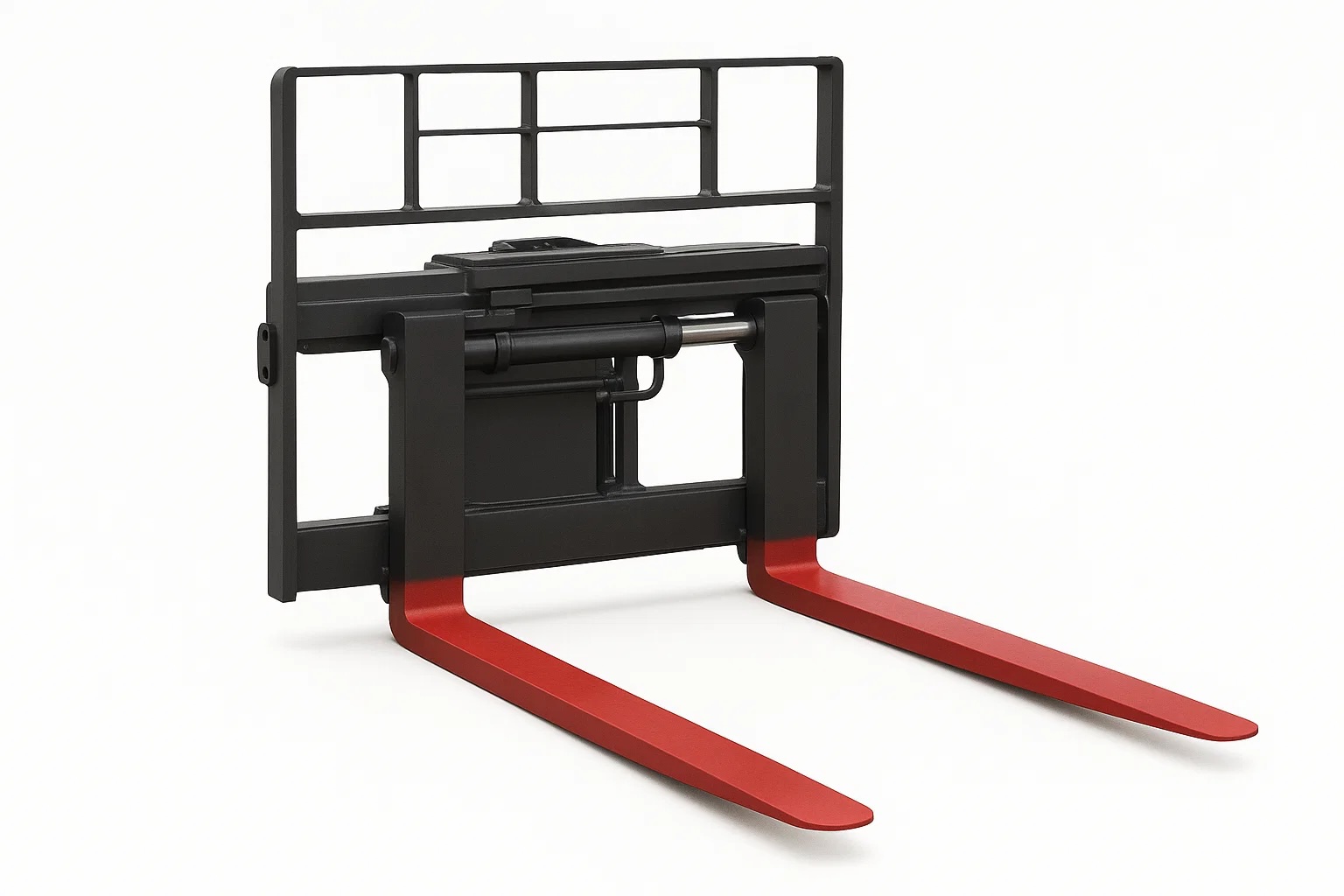
Side shifters enable lateral load movement without repositioning the entire forklift, making them ideal for tight warehouse aisles and precision pallet placement. This attachment allows operators to make fine adjustments during load placement, reducing the need for multiple positioning attempts.

Fork positioners provide hydraulic adjustment of fork spacing to accommodate various pallet sizes without manual repositioning. This capability becomes particularly valuable when handling mixed loads with different pallet dimensions throughout a single shift.
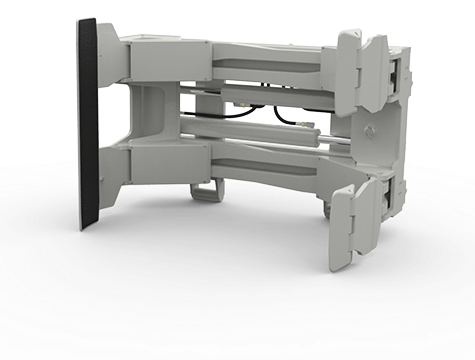
Clamps designed for specific materials handle non-palletized loads including large paper rolls, fragile cartons, and industrial drums. These attachments provide secure gripping without damaging delicate materials or requiring additional packaging.
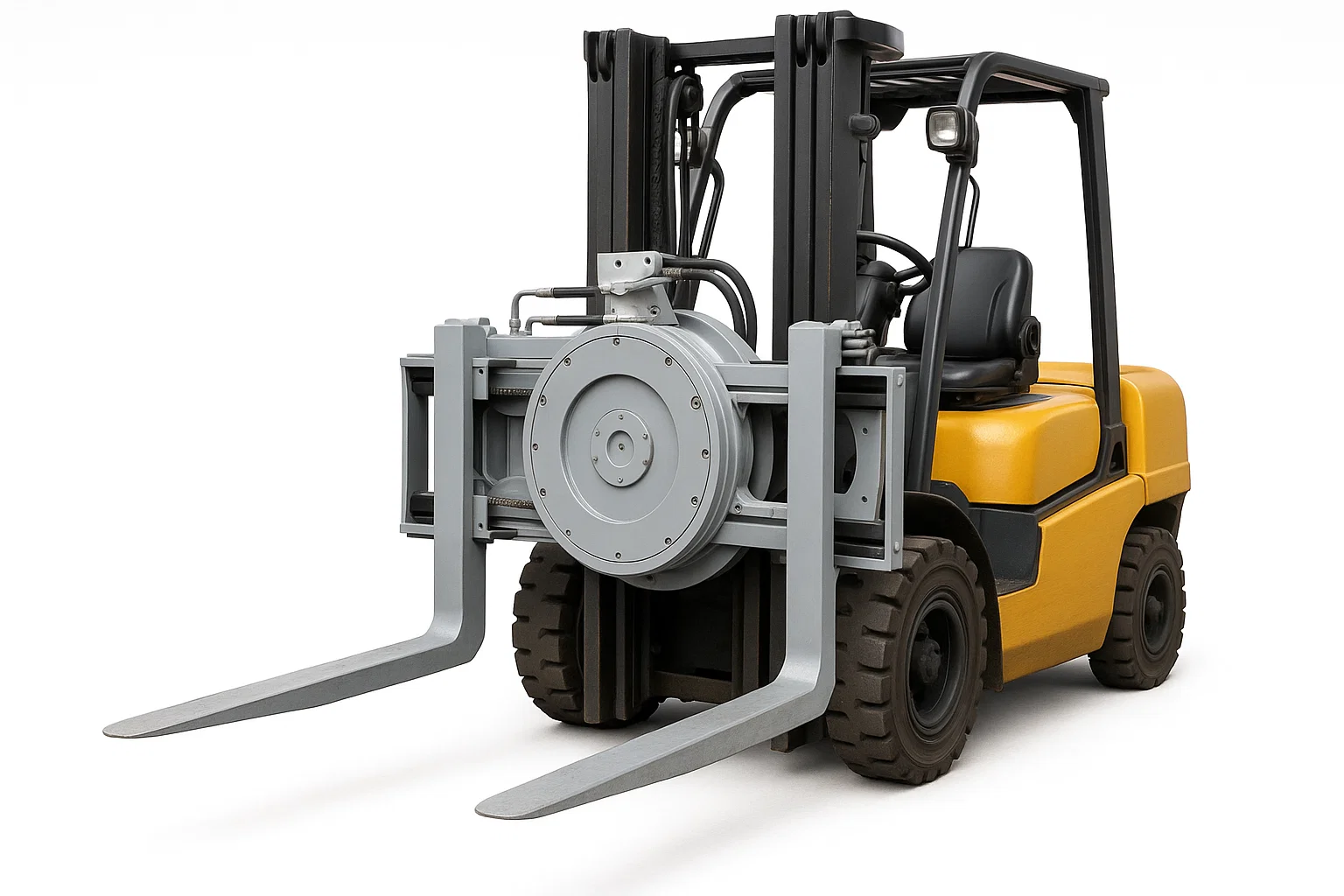
Rotators prove useful in industries requiring tipping or dumping capabilities, such as food processing operations and recycling facilities. They enable controlled dumping of bulk materials while maintaining operator safety and load control.
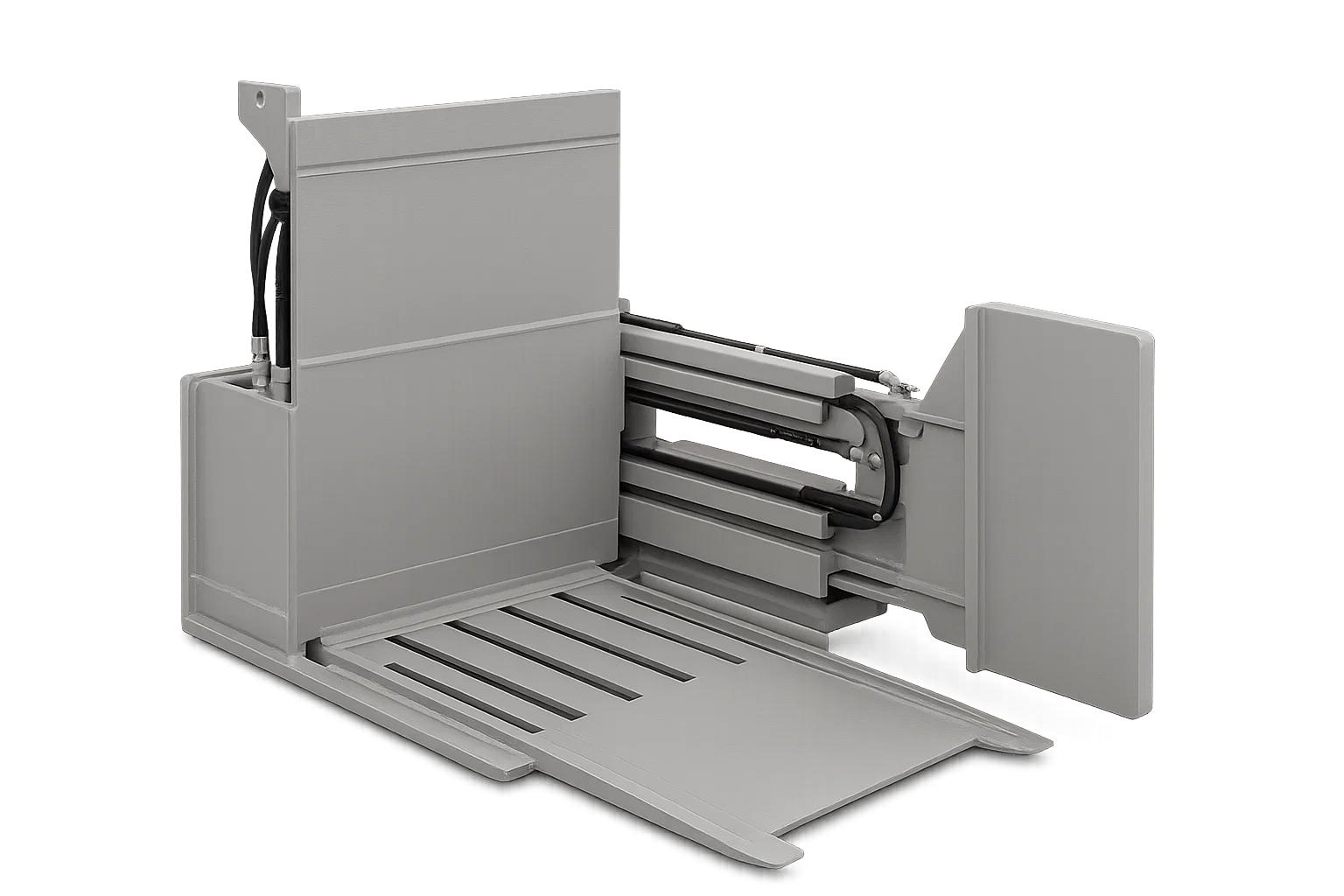
Push/pull systems allow the use of slip sheets instead of traditional pallets, commonly employed in food and beverage industries where hygiene and weight reduction matter. These systems can significantly reduce packaging costs while maintaining handling efficiency.
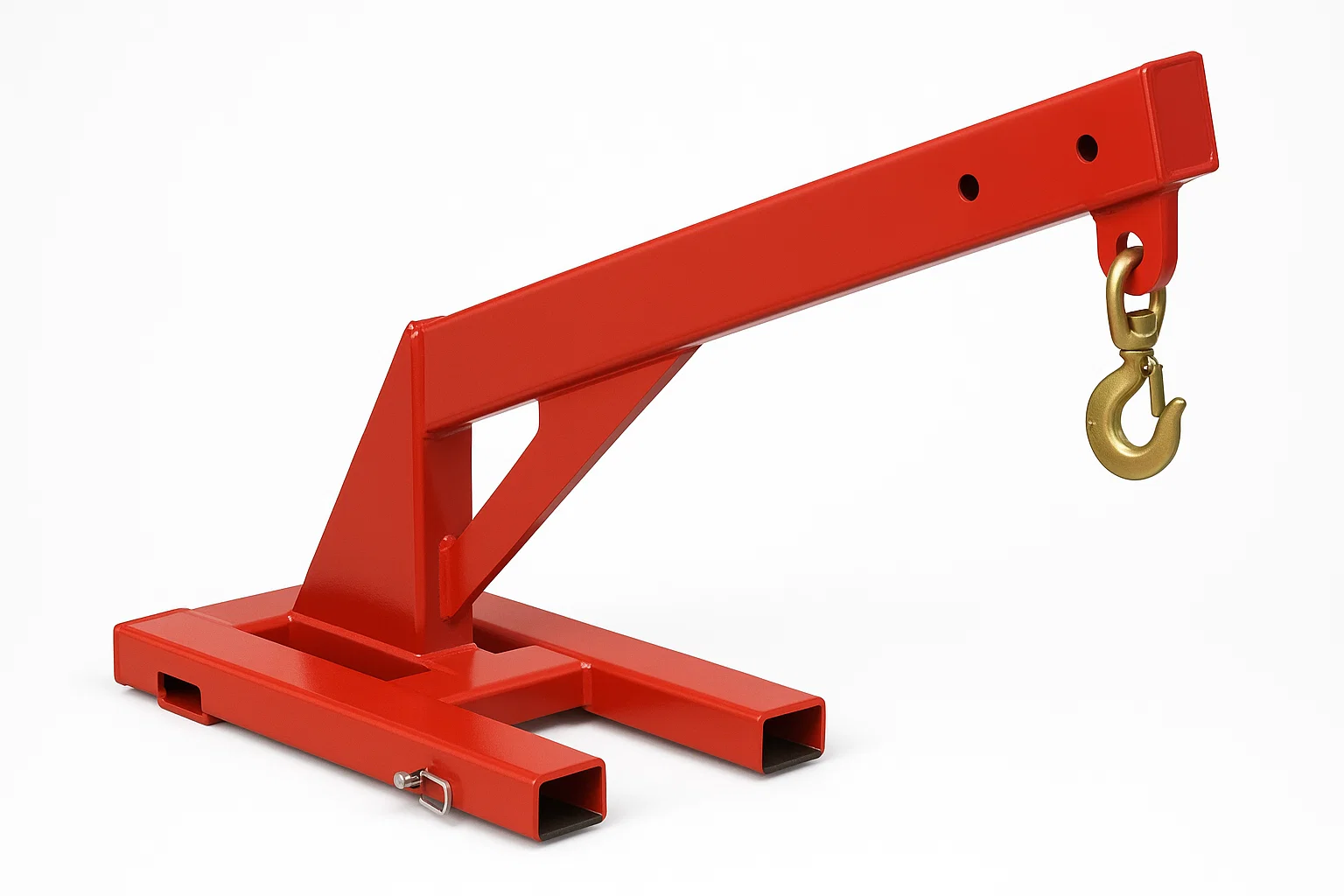
Extension jibs and booms expand forklift reach capabilities to access loads in otherwise difficult locations. They're particularly valuable for handling oversized materials or working in confined spaces where standard fork positioning isn't possible.
Distribution centers benefit significantly from attachments that improve handling precision and speed. Side shifters provide lateral load adjustments without constant truck repositioning, making them perfect for tight aisle operations and precise pallet placement requirements.
Fork positioners offer hydraulic spacing adjustment to accommodate mixed pallet sizes efficiently throughout daily operations. Load backrest extensions prevent product toppling when handling tall or loosely stacked loads, reducing damage and improving safety.
Heavy manufacturing environments require attachments capable of handling awkward, oversized loads safely. Jibs and booms extend reach capabilities for lifting bulky items like engine blocks and steel coils directly from storage racks or assembly positions.
Fork-mounted work platforms provide safe, OSHA-compliant elevated access for maintenance and overhead assembly tasks. Rotators enable controlled handling of scrap materials, castings, and bulk components requiring dumping or positioning operations.
Construction applications demand attachments that handle diverse material types and outdoor conditions. Multi-pallet handlers with double or triple fork configurations allow staging more materials per trip, improving efficiency in high-volume lumber yards and building supply operations.
Snow plow and sweeper attachments keep outdoor staging areas accessible and safe throughout winter conditions, maintaining productivity regardless of weather challenges.
Food processing and distribution operations require attachments that support hygiene standards while maintaining efficiency. Push/pull attachments enable slip sheet usage instead of pallets, providing lightweight, hygienic load handling commonly used in bakery and beverage distribution.
Carton clamps handle stacked cases, shrink-wrapped loads, and beverage multipacks without requiring palletization. Load stability frames secure crates and trays during transport through temperature-controlled environments.
Paper industry operations require specialized handling to prevent product damage. Paper roll clamps safely grip and transport large rolls without deforming them or damaging the product core.
Cradle forks provide scoop-style support that lifts rolls from beneath, reducing crush damage on delicate cores and maintaining product quality throughout handling operations.
Chemical handling demands attachments designed for safety and containment. Drum handlers and rotators provide secure lifting, tilting, and pouring capabilities for liquid and powder containers used in batching and filling operations.
Enclosed cab accessories including air filtration systems and full enclosure modifications protect operators from airborne contaminants in hazardous material environments.
Waste management operations require attachments capable of handling irregular, loose materials. Material clamps designed for scrap, bales, and cardboard secure irregular loads without requiring palletization or additional packaging.
Grapple buckets with hydraulic operation pick up loose debris, glass fragments, and demolition waste that cannot be handled with standard forks.
Clean environment operations require specialized attachments that prevent contamination. Work platforms with integrated tool trays support picking, staging, and light assembly operations at height while meeting static restraint system requirements.
Non-marking tires and load wheels prevent floor contamination and protect sensitive surfaces in clean room environments.
Every attachment installation affects lift capacity calculations, making manufacturer deration chart verification important before implementation. Load capacity changes based on attachment weight, load center modifications, and operational parameters that must be clearly understood.
Operator training programs must include specific instruction on attachment usage, safety procedures, and operational limitations. New attachments require updated training curricula and competency evaluations to maintain safe operations.
Daily inspection procedures should include attachment-specific checkpoints to identify wear, damage, or operational issues before they become safety hazards. Regular maintenance prevents attachment failures that could cause accidents or equipment damage.
Compliance verification confirms that attachments meet OSHA and ANSI/ITSDF B56.1 requirements, with updated data plates reflecting capacity changes as required by OSHA 1910.178(a)(4). Documentation must accurately reflect modified equipment specifications.
Successful attachment investments require strategic approaches that consider both immediate needs and long-term operational goals. Smart implementation maximizes value while minimizing risks and complications.
Partner with established vendors who provide comprehensive support including installation, training, documentation, and ongoing technical assistance. Vendor relationships become important for troubleshooting, maintenance, and future expansion needs.
Implement tracking systems that measure productivity improvements, cycle time reductions, and labor savings attributable to attachment usage. Data collection helps justify investments and identify additional opportunities for improvement.
Develop attachment rotation schedules that maximize utilization across compatible equipment. Sharing attachments among multiple forklifts increases usage rates and improves return on investment calculations.
Plan attachment acquisitions as part of broader fleet management strategies rather than isolated purchases. Coordinated planning helps ensure compatibility, standardization, and optimal resource allocation.
Successful attachment programs require systematic approaches that address technical, operational, and administrative considerations. Proper planning prevents problems and ensures successful outcomes.
Conduct thorough needs assessments that evaluate current material handling challenges, volume requirements, and operational constraints. Understanding specific requirements helps select appropriate attachment types and configurations.
Develop comprehensive training programs that address attachment operation, safety procedures, inspection requirements, and emergency responses. Well-trained operators maximize attachment benefits while minimizing risks.
Establish maintenance schedules that address attachment-specific requirements in addition to standard forklift maintenance. Proper maintenance prevents premature wear and maintains safe operating conditions.
Create documentation systems that track attachment assignments, usage patterns, maintenance activities, and performance metrics. Good records support decision-making and demonstrate compliance with regulatory requirements.
The right forklift attachments can dramatically improve material handling efficiency while reducing manual labor and safety risks. However, improper selection or implementation can introduce new hazards and compliance challenges that outweigh potential benefits.
Strategic attachment selection requires understanding load capacity impacts, training requirements, maintenance needs, and regulatory compliance obligations. Success depends on systematic evaluation and proper implementation rather than simply purchasing equipment.
Investment in proper training, documentation, and ongoing support maximizes attachment value while maintaining safe operations. For equipment managers, attachment decisions significantly impact both productivity outcomes and operational safety performance.
Q: How do attachments affect forklift load capacity?
A: Every attachment reduces load capacity due to added weight and changed load center. Manufacturers provide deration charts showing capacity reductions for each attachment. Always verify these calculations and update equipment data plates per OSHA requirements.
Q: Do operators need special training for attachments?
A: Yes, OSHA requires training on specific equipment configurations including attachments. Operators must understand capacity changes, operational procedures, and safety considerations unique to each attachment type before use.
Q: Can attachments be moved between different forklift models?
A: Some attachments can be shared if forklifts have compatible mounting systems and adequate capacity. However, each combination requires verification of compatibility, capacity calculations, and proper installation procedures.
Q: What maintenance do forklift attachments require?
A: Daily visual inspections for damage, wear, or loose components are required. Hydraulic attachments need fluid level checks and hose inspections. Follow manufacturer maintenance schedules for lubrication, adjustments, and component replacement.
Q: How do I justify the cost of specialized attachments?
A: Calculate labor savings, productivity improvements, reduced product damage, and safety benefits. Most attachments pay for themselves within 6-18 months through reduced handling time and eliminated manual operations. Track metrics to demonstrate ROI.
Optimize your material handling operations with the right forklift attachments tailored to your specific applications and industry requirements. Our equipment specialists help evaluate your needs, select appropriate attachments, and develop implementation strategies that maximize productivity and safety. Call (866) 350-9156 or request a consultation to explore attachment solutions for your operation.